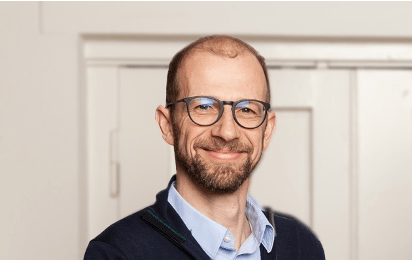
EconSight is a new generation, independent and neutral consulting company in the best Swiss sense. Dr. Jochen Spuck, Chief Technology Officer (CTO) at EconSight in Basel, has prepared a scientific analysis for the Bertelsmann Foundation on the topic of “WORLD CLASS PATENTS IN FUTURE TECHNOLOGIES”, in which the Patent Monitor from Averbis is used.
(Read the complete article here, for the methodology see page 66)
The Bertelsmann Stiftung is one of the most influential think tanks in Germany. “The Bertelsmann Stiftung is a place where we look to the future without party-political boundaries and develop impulses for change.” Reinhard Mohn, Founder
Dr. Spuck, most patent analyses use either very broad technology fields or very specific patent classes to categorize the contents. EconSight therefore strikes a balance between these two approaches by developing specific technology definitions in order to capture the technological activities of companies, research institutions, regions and countries in the best possible way. For this purpose you use an AI-based application, our Patent Monitor. Can you explain why you have chosen Averbis?
Firstly, because we have already had very positive experiences with the results for industrial customers for several years, which go far beyond what can be achieved with cluster engines or other automatic categorization tools on the market. Secondly, because Averbis is a competent and “close” supplier with whom you can easily strive for solutions instead of discussing problems.
Where do you see the biggest challenge in the area of worldwide patent administration?
On the one hand, the mass, since the number of patent applications is increasing more and more and at the same time more and more patents are available in languages other than English, especially Chinese and Korean. On the other hand, the dynamics of technologies, triggered by digitalization. The classical classification is often too complex and too slow, which makes it difficult to bring meaningful thematic structures into the patent landscape. And without these, the patent world remains closed to non-experts.
Which potential do you see in the future in the field of AI to support the various questions of a patent analyst with software solutions?
We call it adaptive classification or categorization, i.e. categorization that is quickly adapted to requirements, we believe is the ideal solution for patent analysts. This has to be done on different levels, i.e. large topics, for example “robotics”, have to work as well as on an FTO level, for example “left-hand threaded screw for knee joints”. In addition, AI is increasingly being used to overcome the language barrier once and for all. AI will offer real added value if it can analyse technical similarities in patents on a large scale in order to make disruptive technological developments visible.
In your opinion, how will the world look in 10 years in the field of patents? Where will the development leading to?
Automated prior art searches, AI novelty searches and semi-automated FTOs will completely change the landscape of patent analysts and examiners at the offices. AI will not only do the research, but also the inventions themselves. AI will be used to make trends visible earlier, and new methods for automatic predictions will be investigated. Patent quality indicators will be available that are based on similarities in content, in addition to or instead of citations, and patents will become recognised indicators of the development and commitment of companies, e.g. in the climate and environmental sector (based on AI-supported categorisations). In addition, the use of AI will develop from patents to scientific literature and will significantly expand the search possibilities.
Thank you very much for this informative conversation and your valuable time, Dr. Spuck

